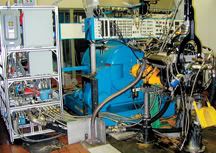Originally Posted By: Towel_Rail
Originally Posted By: Mike_dup1
Some of you guys are not happy with any info, all you do it knock everything you don't agree with. No open minds it seems.
As a critical thinker, I question both those who spread "myths" and those who claim to "debunk" them. I also like to see peer-reviewed studies and primary sources, not just a bunch of statements in a quote block from some guy. Don't take it personally.
- Scott
Except in this case, the debunker has simply restated facts that are common knowledge and well documented within the lube industry over the past couple of decades. There's nothing new in the 'debunker's claims' - he's just summarized it nicely.
Originally Posted By: Mike_dup1
Some of you guys are not happy with any info, all you do it knock everything you don't agree with. No open minds it seems.
As a critical thinker, I question both those who spread "myths" and those who claim to "debunk" them. I also like to see peer-reviewed studies and primary sources, not just a bunch of statements in a quote block from some guy. Don't take it personally.
- Scott
Except in this case, the debunker has simply restated facts that are common knowledge and well documented within the lube industry over the past couple of decades. There's nothing new in the 'debunker's claims' - he's just summarized it nicely.








